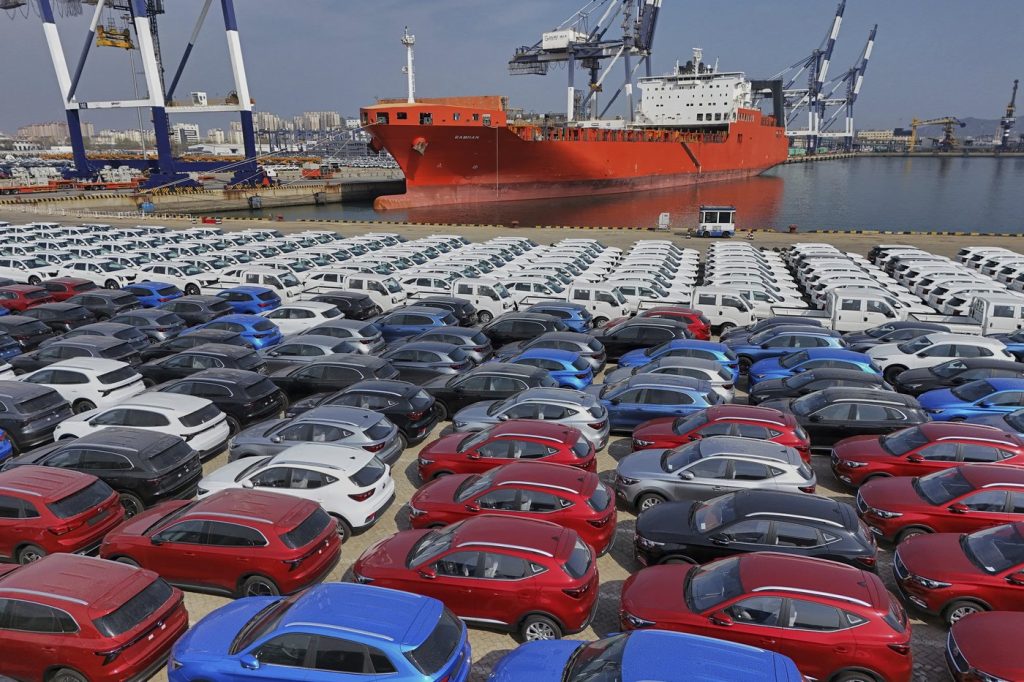TAIPEI, Taiwan (AP) – In response to U.S. President Donald Trump's newly imposed tariffs, China has announced a retaliatory 34% tax on all U.S. imports, to take effect next week. This strong reaction indicates a level of preparedness on China's part that puts its exports in a challenging position while simultaneously inflicting pain on U.S. exporters, potentially serving as leverage in future negotiations.
The tariffs, which were announced on Friday, align with the recent tariff rate imposed by Trump this week on Chinese products entering the United States. This new taxation comes on top of previous rounds of tariffs of 10% declared in February and March, based on allegations regarding Beijing's involvement in the fentanyl crisis. Additionally, China’s latest retaliatory measures include more stringent export controls on rare earth minerals, essential for numerous technologies, along with a lawsuit filed at the World Trade Organization.
China has also put a halt on imports of sorghum, poultry, and bonemeal from several U.S. companies and added over two dozen firms to its list of trade-restricted entities. Furthermore, an anti-monopoly investigation has been launched against DuPont China Group Co., a subsidiary of the multinational chemical corporation, showcasing the aggressive stance Beijing is taking.
The quick succession of tariffs and import restrictions echoes the trade war that occurred during Trump’s first term, which spanned most of his presidency and continued in some capacity under his successor, Joe Biden. Previously, China had responded to U.S. tariffs with 15% duties on coal and liquefied natural gas, along with a 10% tariff on crude oil, agricultural machinery, and large-engine vehicles imported from the U.S.
Last month, China also initiated an anti-monopoly investigation into Google and included PVH, the parent company of renowned U.S. fashion brands Tommy Hilfiger and Calvin Klein, on its "unreliable entity" list. Additionally, five rare metals crucial for the defense and clean energy sectors were subjected to export limitations.
The escalating tensions have the potential to evolve into a more significant trade war, harkening back to previous key moments within this extensive trade dispute between the nations. For instance, in March 2017, shortly after his inauguration, Trump signed an executive order aimed at tightening tariff enforcement in anti-dumping cases. In April 2017, during a visit to Beijing, Trump and Chinese President Xi Jinping agreed on a 100-day trade negotiation plan, although this quickly fell apart by July.
In August 2017, Trump initiated an investigation into alleged Chinese theft of American intellectual property, assessing that it was costing the U.S. as much as $600 billion per year. By January 2018, tariffs of 30% on imported solar panels, predominantly sourced from China, were announced. In April of the same year, Beijing retaliated with tariffs worth approximately $3 billion on U.S. imports, including 15% duties on various products like fruits and pork.
Following another volley of tariffs in June-August 2018, which impacted over $250 billion in Chinese goods and over $110 billion in U.S. imports, negotiations hit a stalemate between December 2018 and May 2019. Following failed talks, Trump escalated tariffs from 10% to 25% on $200 billion worth of Chinese products.
In January 2020, a Phase One trade deal was signed, where China promised to buy an additional $200 billion of U.S. goods over two years, although it later became apparent that China had not met these purchase commitments. Adding to the strain, in October 2022, Biden rolled out new restrictions on selling semiconductors and chipmaking equipment to China.
As the conflict continued into 2024, Trump announced plans for tariffs up to 60% on all Chinese imports if re-elected, while Biden also raised tariffs on a variety of Chinese goods, including electric vehicles and solar cells. Most recently, additional tariffs, including a new 10% on all Chinese imports, were imposed in February 2025, prompting China to retaliate with further tariffs on key American agricultural products and expanding controls on U.S. companies.
On April 3, 2025, Trump proclaimed "Tariff Liberation Day," signaling additional 34% duties on all Chinese imports, prompting a series of countermeasures from China, including new export controls on rare earth minerals and increased scrutiny of U.S. companies operating in China.










